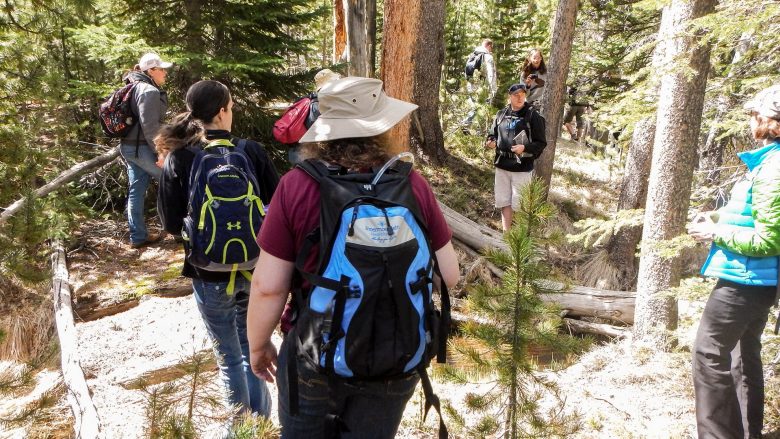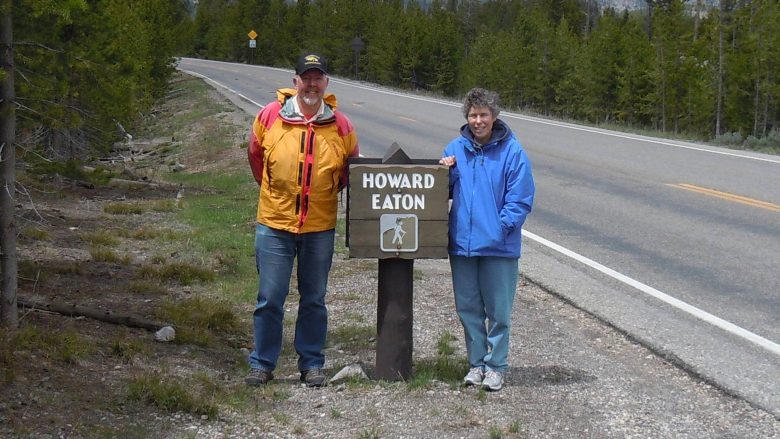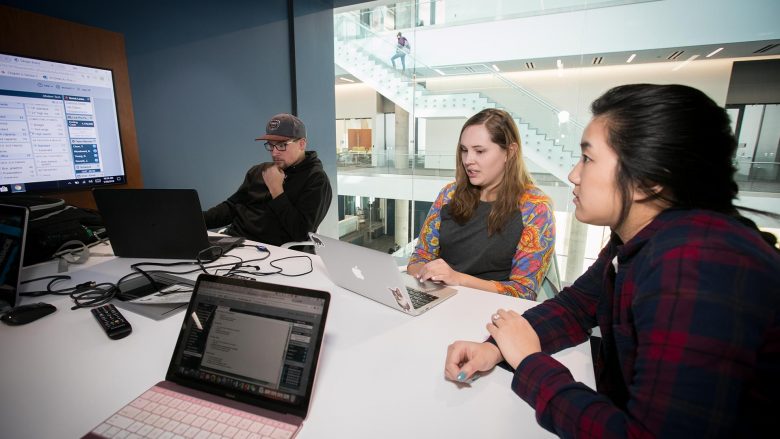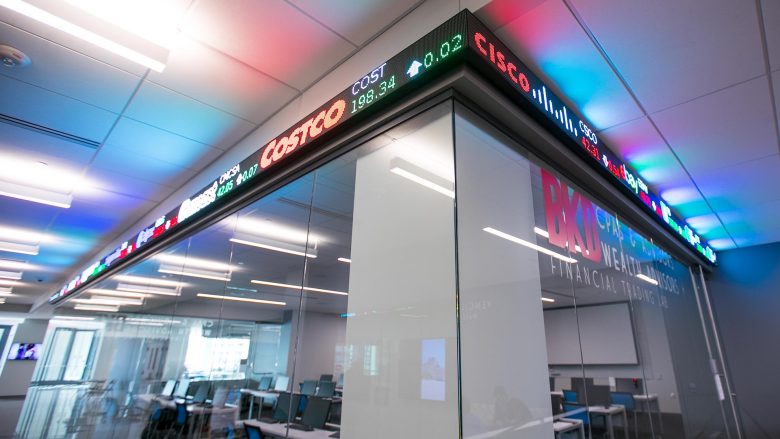Archive for February, 2018

A place for meaning
What comes to mind?
Dr. Judith Meyer, a historical geographer, wants to know how you experience that landscape and why.
“I study the sense of place: the meanings people give to the landscape and how those meanings influence our attitudes toward particular places, especially in terms of how we manage them,” said Meyer, geography program coordinator in the department of geography, geology and planning. “Why do we fight over Jerusalem? Is the Ozarks part of the Yankee North or the Dixie South?
“Understanding the sense of place is important in making thoughtful and effective land-use decisions.”
Meyer’s primary research has been on Yellowstone National Park.
“If you look at 200 years of people writing about their experience in (Yellowstone), certain themes are repeated: ‘it’s beautiful, it piques my curiosity,'” Meyer said. “People express appreciation for a government that protects wilderness while also making that wilderness accessible to the public.”

Photo submitted by Judith Meyer
A path to the past
Meyer has extensively researched Yellowstone’s Howard Eaton Trail. The 157-mile, park-encircling trail’s namesake was a dude rancher and saddle-horse trail guide entrepreneur.
The trail opened in 1923, designed for horseback riding. But over time, park visitors’ interests shifted toward hiking.
In 1970, the National Park Service, or NPS, stopped maintaining the trail when park management goals transitioned from providing recreational access to protecting sensitive wildlife habitat and delicate thermal features.
In summer 2014, Meyer traveled with a team of students and colleagues to Yellowstone to hike, map and photograph what remained of the trail.
“I think this research tells us that it is possible to have rich, historically appropriate and authentic experiences in the national parks today as long as you educate people on the significance of what they’re doing, its relationship to the past, its impact on the future.” — Dr. Judith Meyer
Comparing then and now

Photo submitted by Judith Meyer
The group mapped parts of the former trail using Geographic Information System, orGIS, technology, which includes digital images and analysis of the landscape.
Along the way, the group replicated photos from the same vantage points as photos taken on Eaton’s tours. This process, rephotography, provides a side-by-side comparison of the past with the present.
Combining rephotography, historical accounts and GIS technology is a unique aspect of Meyer’s research.
“Photography is really powerful, but there isn’t a lot of good representation of it in the field of geography combined with GIS,” said Emma Walcott-Wilson, a graduate of MSU’s geography program and current PhD student at the University of Tennessee. “Dr. Meyer does an expert job of blending GIS and qualitative research.”
Meyer’s group presented a poster entitled “The Howard Eaton Trail: Crossing Borders and Disciplines to Preserve the Past” at the 12th Biennial Scientific Conference on the Greater Yellowstone Ecosystem.
A section of the poster read: “Rephotography of sites along the (trail) show that little has changed about the traditional Yellowstone experience. People stubbornly return to the same vantage points, endure hardship … and engage in many of the same activities.”
The study’s purpose: preserve the trail as a “cultural, historical and scientific” artifact.
Kortney Huffman, GIS specialist for the city of Springfield, wrote her thesis on the project, completing her master’s degree in geospatial science in 2015.

Photo submitted by Judith Meyer.
Setting the record straight
Meyer’s research on Yellowstone helps clarify history. For example, conventional wisdom suggests Eaton himself laid out his namesake trail.
“Eaton died the year before the trail opened,” Meyer said. “Naming the trail for Eaton was in part a political ploy to bring name recognition to the newly established NPS’s infrastructure project.”
She wrote about this myth in Western Historical Quarterly and about the 2014 field course study in the Geographical Review. Both articles appeared in 2017.
Meyer’s future endeavors include a biography of Eaton and his connection to Yellowstone. Additionally, Meyer plans a book, in conjunction with Huffman, showcasing photo-pairs on some of her best rephotography projects.
Naturally, this research requires a trip or two back to Yellowstone.
“When it starts to green up in the spring, I feel a tug, a pull, to return to Yellowstone,” Meyer said. “It’s a bit like the monarch butterfly or humpback whale migration. I feel called back to the park.”
Inspiring others with geography
Emma Walcott-Wilson was a history major, until she took one of Dr. Judith Meyer’s geography classes.
Her major changed soon thereafter.
“Dr. Meyer was so engaging and passionate,” Walcott-Wilson said. “It was exciting to see somebody that thrilled about what they were doing and excited about their students following along.”
Walcott-Wilson earned bachelor’s degree in geography from MSU, earned her master’s at Mizzou, and is currently pursuing a PhD at the University of Tennessee.
In 2016, Meyer invited Walcott-Wilson to present at MSU’s Geography Awareness Week Seminar.
“Working with Dr. Meyer is something I’d like to do more of in the future, especially because one of my concentration areas is national parks.”
- Story by Kai Raymer
- Main photo by Jesse Scheve
Further reading

Making money do the work
“I tackle different areas, but eventually it’s all about proving some of the common sensical insights.” – Dr. Edward Chang
In his view, money may be related to each of these, whether it’s by selecting the right investments, saving money, giving generously or living comfortably into retirement.
These values inform how Chang approaches spreading financial literacy in the classroom and his research.
Chang – who has had nearly 50 publications during his career – researches investment vehicles for the everyday investor. At times, he has evaluated the soundness of Consumer Reports investment recommendations. He has also tested the reliability and risk of newer tools.
Ultimately, he wants to uncover the best ways to make money meet the goals of the investor.

Photo by Kevin White
Tools for investing
He evaluates the characteristics and performance of investment vehicles, or tools used to invest money. These tools can include anything from stock to real estate to mutual funds.
“When you use the wrong approach, it doesn’t matter how much you make,” said Chang. “You may not be able to have a comfortable retirement life.”
Chang, who has been published in the Journal of Investing, has focused his most recent research on exchange-traded funds, or ETFs. These newer investment vehicles are like mutual funds. ETFs pool together investors’ money, and give small investors what only institutional investors could do several decades ago.
“A single person can participate in the pool of money and buy 60 percent of stocks, 40 percent of bonds, for example, and invest the money,” said Chang, an early researcher on this type of investment vehicle. “It’s really a blessing for small investors because they can’t buy a lot of stock with small amounts of money, but in the pool they can.”
“When you try to predict future performance, it’s like the weather – nobody knows.” – Dr. Edward Chang
An investment research firm called Morningstar provided the initial data for his studies, which gave him fund characteristics such as the expense ratio, turnover rate, and risk and performance measures.
From there, he looked at the risk-adjusted return, which he summarizes as being the cure for naïve analysis.
“To see through the fog of risk-return tradeoff, we should focus on risk-adjusted return rather than raw return,” said Chang. “By using risk-adjusted return measures, we are able to determine how good an investment vehicle really is and whether the return is worth the risk.”
ETFs grew out of index mutual funds, noted Chang. His findings reveal that they have many advantages, such as low expense ratio, good tax efficiency, tradability like a stock and very low tracking error in terms of premium or discount.
In addition to evaluating these ETFs based on the risk-adjusted return, he notes that a low expense ratio is reliable.
But no investment vehicle is without flaws.
“When I began looking at ETFs, I got excited about them, and then many in the investing public got excited about them. They grew beautifully to the extent that I think we may have overdone it,” he said. “Many different varieties came out, small niches, kind of like a fad.”
Like fashion fads, he doesn’t expect these small niche funds to perform well in the long run.

Photo by Kevin White
Secrets of good fortune
One of Chang’s goals is to have long-term financial security and happiness – and to pay that forward through education.
According to Chang, the key is to first save your money and then invest for the future.
“I think the most important thing I’ve learned in the past 20 plus years is that saving has been underrated and investing has been overrated,” said Chang. “We always think ‘Well, I should invest in the right thing.’ But I think, more importantly, we should save first.”
“If it’s a right thing to do for the next few years, it doesn’t matter if I wait until tomorrow.” – Dr. Edward Chang
This is practical advice – something that financial practitioners and individuals could easily apply. The practicality of Chang’s research is not lost on his collaborators.
One of his frequent research co-authors, Dr. Tom Krueger, J.R. Manning Endowed Professor of Innovation in Business Education at Texas A&M University, was reading USA Today one morning and had to do a double-take.
Billionaire Warren Buffett was providing insight on financial decisions.
“Mr. Buffet’s advice was so consistent with Dr. Chang’s findings…it was almost as if I were reading advice from Dr. Chang,” said Krueger.
Ultimately, Chang believes that investing should be boring, not dramatic.
For those who wish to dabble in higher risk investments for the potential higher pay-off, he has this advice: “We’re talking about your ability to live comfortably throughout life,” so those risky investments should be limited to 5 to 10 percent of the total investment. “You don’t want to play with fire.”
- Story by Shay Stowell
- Main photo by Kevin White

